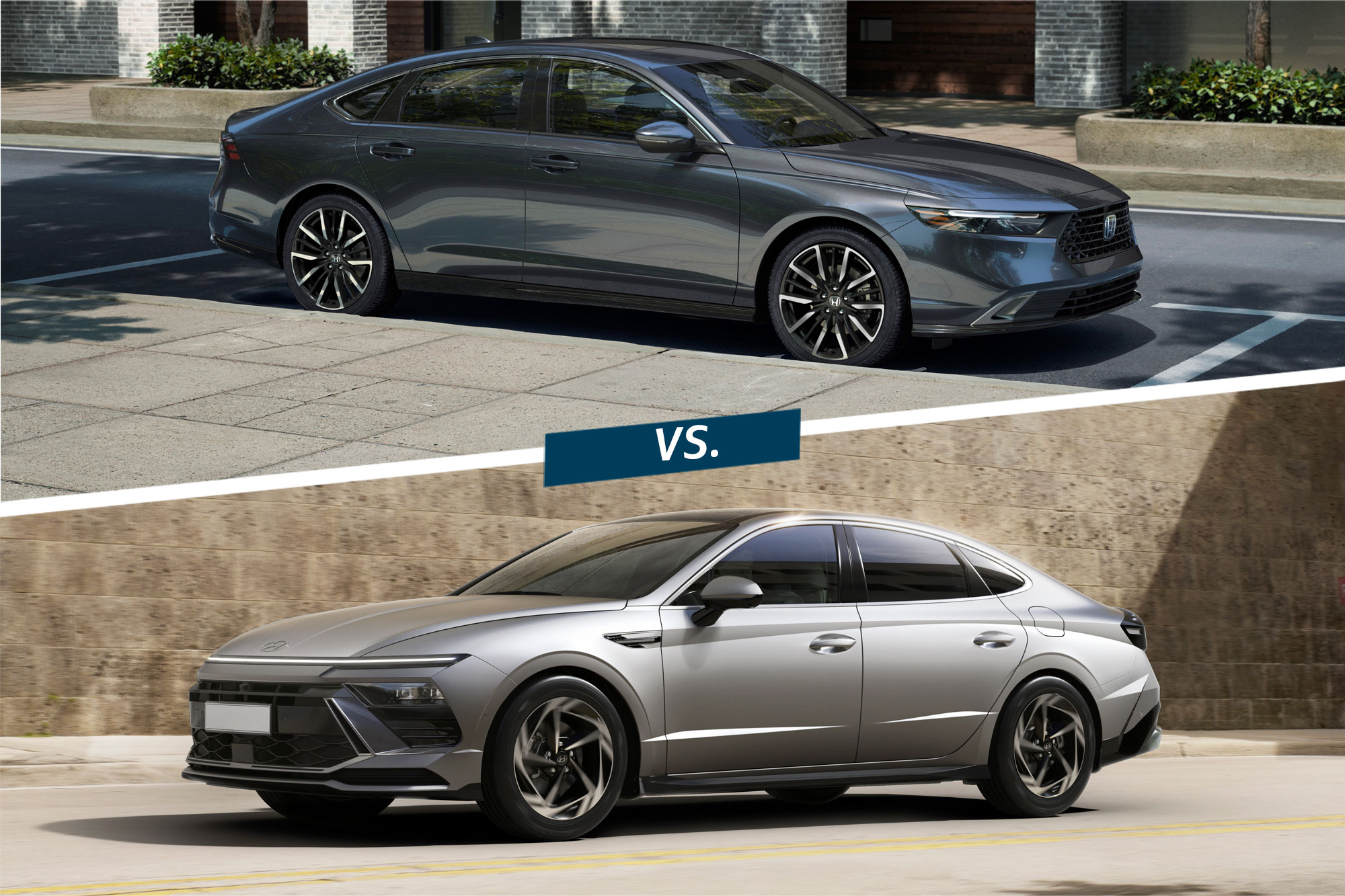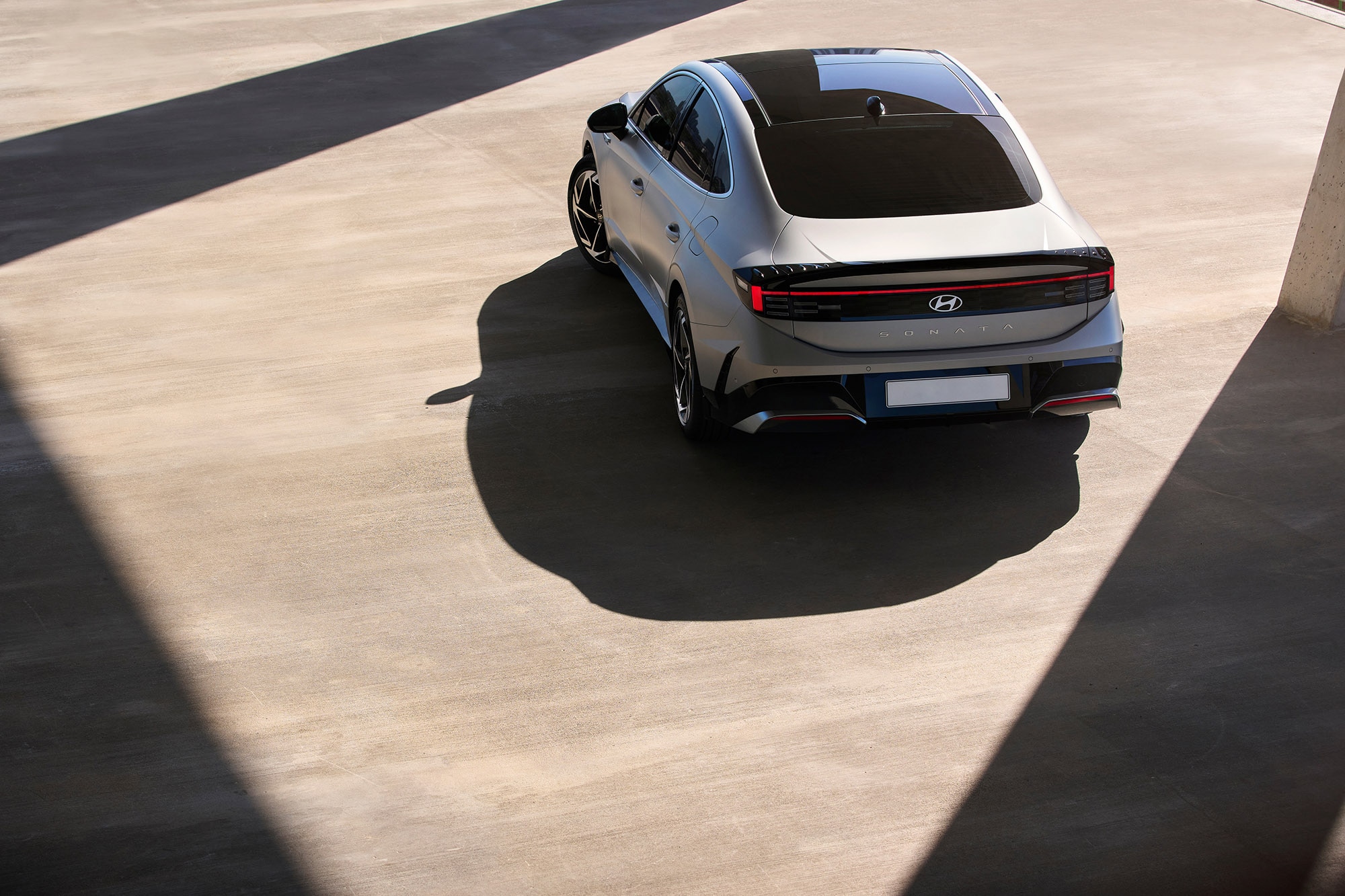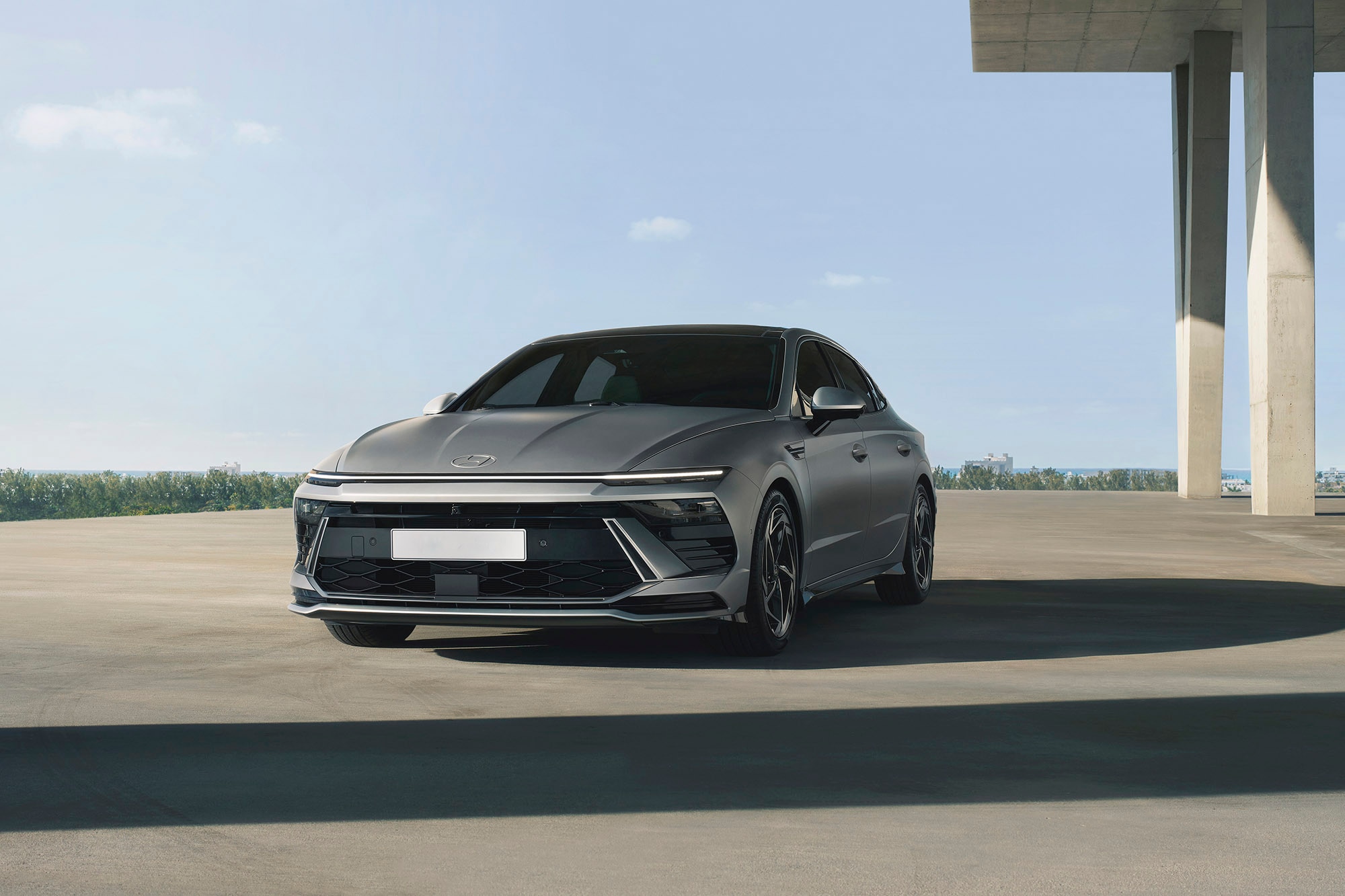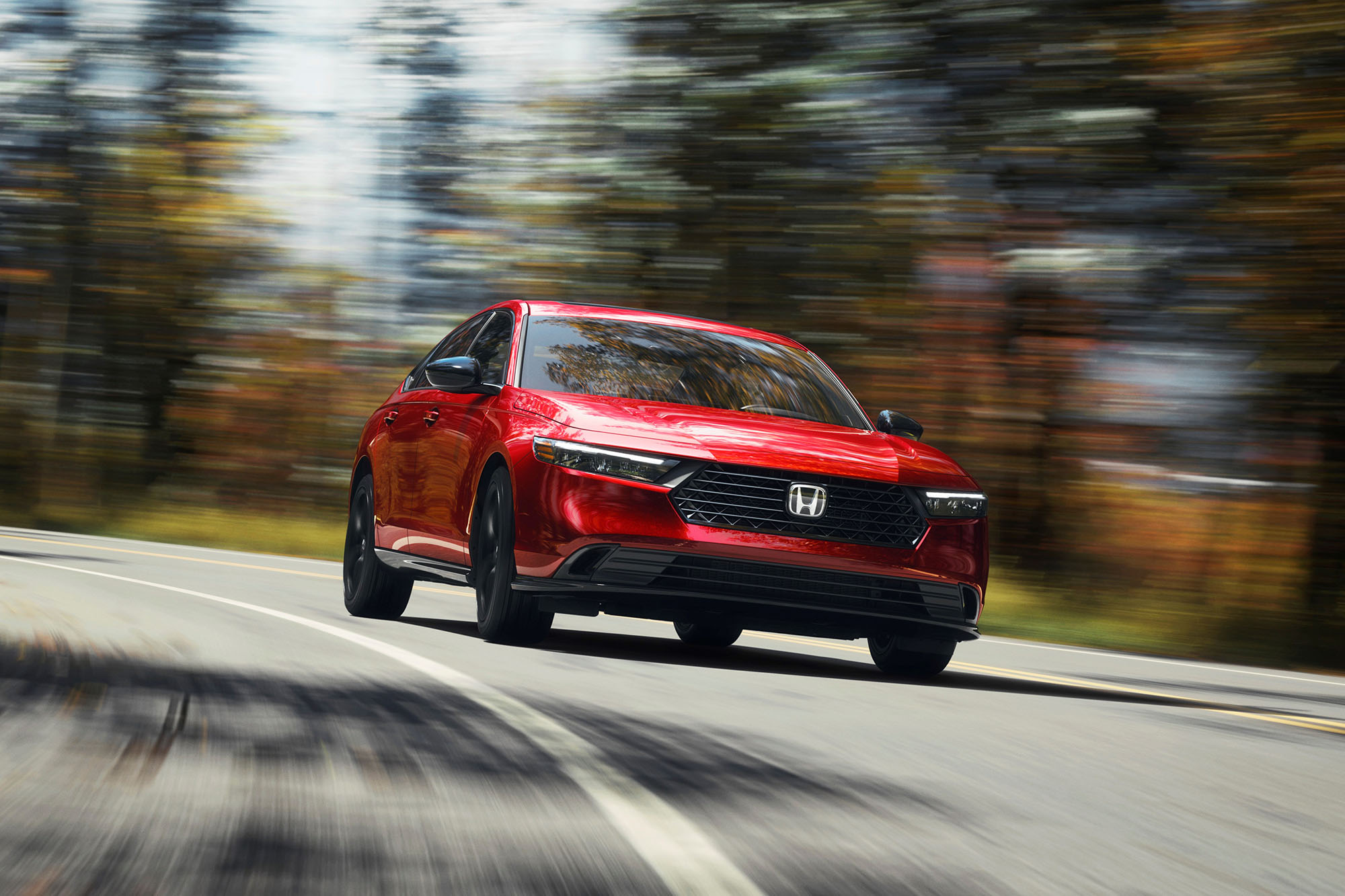Compared: 2024 Honda Accord vs. 2024 Hyundai Sonata
One of these midsize sedans has the edge in efficiency, the other in features.
 Honda | Hyundai
Honda | Hyundai
QuickTakes:
Honda's 2024 Accord and Hyundai's 2024 Sonata are long-standing midsize family sedans with seating for five, base prices below $30,000, efficient four-cylinder engines, and the latest convenience and driver-assistance features. Each is available with a hybrid powertrain, but it's the gas-only models we're considering here.
While the Hyundai might offer more standard features and a high-performance model, the Honda handily wins the fuel-economy comparison even in internal-combustion-engine-only guise.
 Hyundai
Hyundai
Hyundai Offers a Performance Variant, but the Starting Prices Are Similar
Honda offers the non-hybrid Accord in two trims: LX and EX. Both vehicles are front-wheel drive, use a continuously variable transmission (CVT), and employ a turbocharged 1.5-liter four-cylinder making 192 horsepower. Pricing starts at about $29,000 for the LX model and rises to just above $31,000 for the fancier EX trim.
The gas-only Hyundai Sonata's lineup also consists of two trims, but they're separated by more than just feature differences. The base SEL — powered by a 191-hp 2.5-liter four-cylinder mated to an eight-speed automatic transmission — costs about $29,000. Front-wheel drive is standard, but buyers can option all-wheel drive (AWD) for $1,500.
Then there's the performance-oriented Sonata N Line, which sports a 290-hp turbo 2.5-liter and an eight-speed dual-clutch transmission for about $36,000. It's available only in front-wheel-drive form.
 Hyundai
Hyundai
The Hyundai Is More Generous When It Comes to Standard Equipment
The Honda and the Hyundai offer good legroom but divvy it up differently. At 46 inches, the Sonata's front legroom trounces the Accord's 42 inches, but the Honda's back seat gives you more room to stretch, with 41 inches of legroom to the Hyundai's 35.
Hyundai is known among industry experts for offering a lot of standard equipment, and that's certainly the case with the 2024 Sonata. The SEL boasts standard LED headlights, blind-spot monitoring, heated front seats and side mirrors, a 12.3-inch infotainment touchscreen, and dual-zone automatic climate control.
A Convenience package for just over $3,000 gives buyers built-in navigation, a wireless charging pad, and a panoramic moonroof, plus a 12.3-inch driver display in place of the base car's 4.2-inch screen and analog gauges. The quicker and pricier Sonata N Line has the aforementioned upgrades as well as distinct exterior styling and a premium Bose audio system with 12 speakers.
The Accord's LX trim may seem stingy in comparison. It provides only single-zone climate control and a 7.0-inch infotainment touchscreen, though it does include LED headlights and a 10.2-inch driver display.
The next-step-up EX gives you heated front seats and side mirrors, dual-zone automatic climate control, blind-spot monitoring, a power driver's seat, and a moonroof, making it roughly comparable in features — and price — with the Sonata SEL with the Convenience package.
 Hyundai
Hyundai
The Honda Has a Clear Edge in Gas Mileage
Setting aside the hot Sonata N Line for a moment, the Sonata and the Accord are nearly identical in power. But the Honda shines when it comes to fuel efficiency. Both the LX and EX versions of the Accord are rated at 29/37/32 mpg in city/highway/combined driving.
The Hyundai can't match those figures. The Sonata SEL gets 25/36/29 mpg in front-wheel-drive form and 25/34/28 mpg with AWD; the turbocharged Sonata N Line manages just 23/32/27 mpg on the EPA's test cycles.



